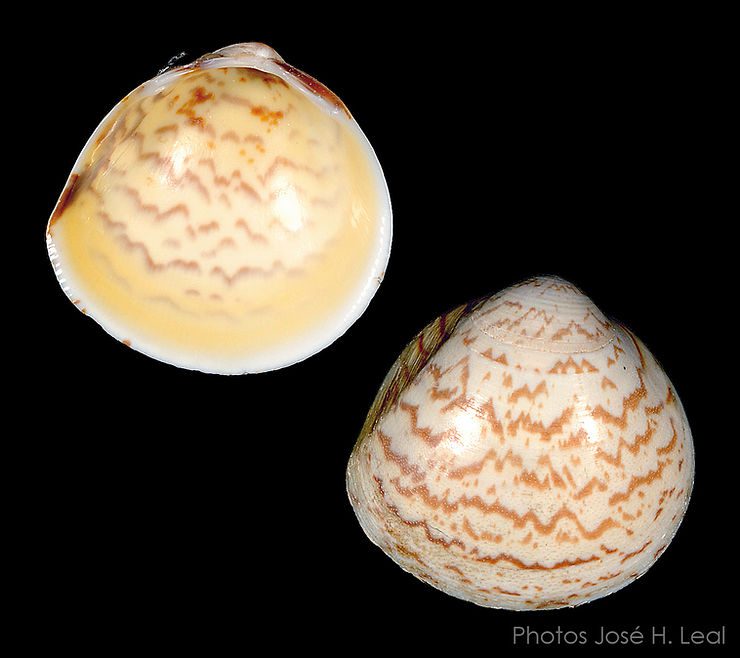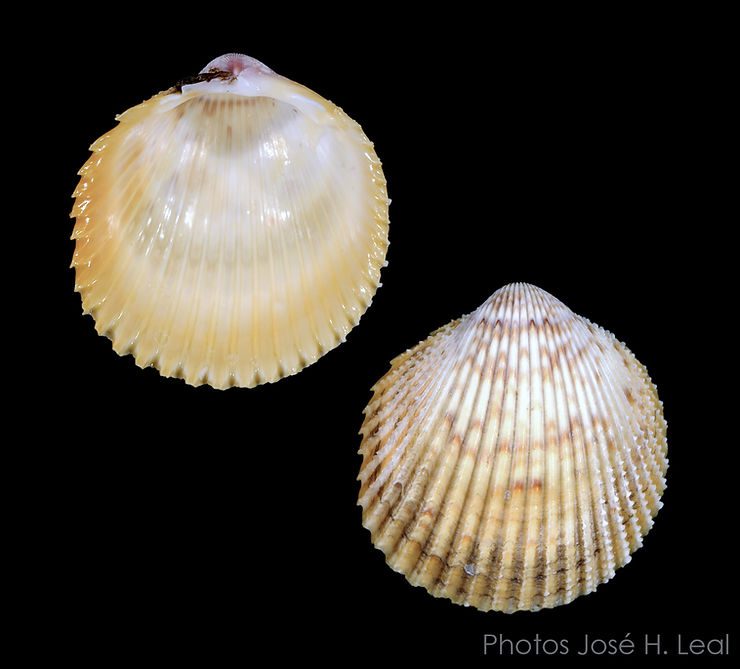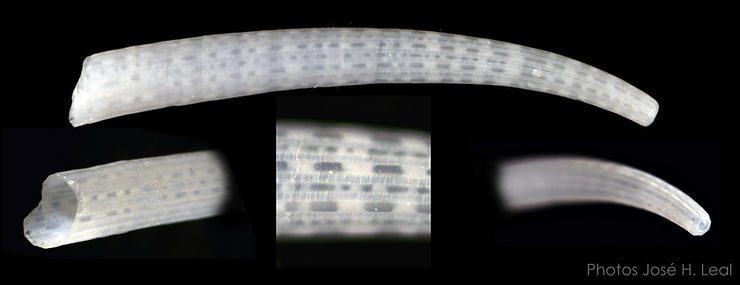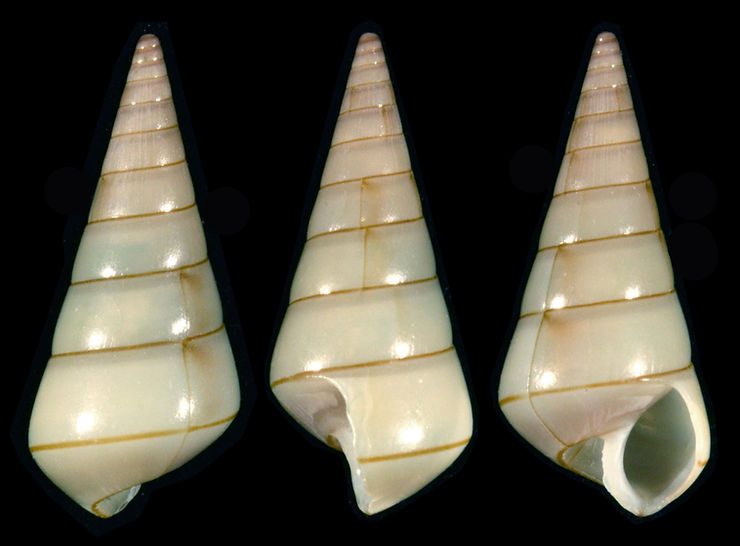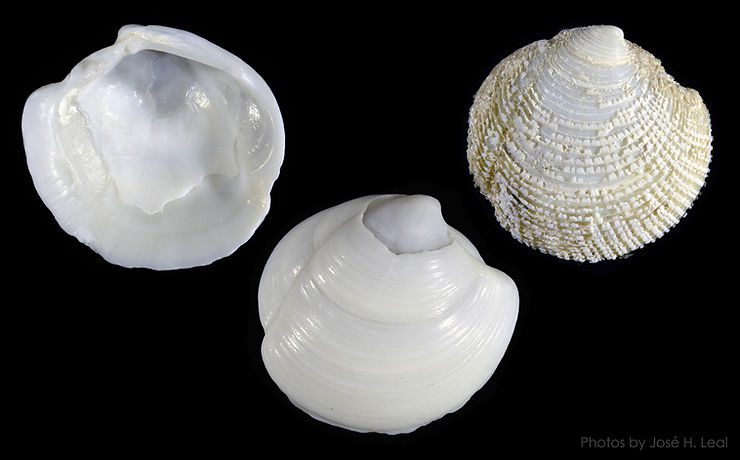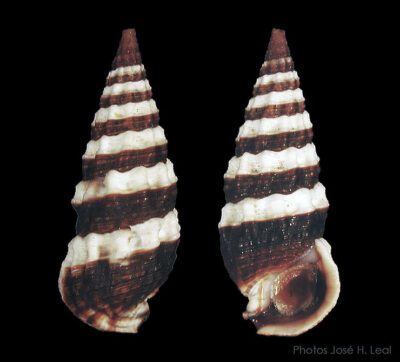
The Pearly Entodesma
The Pearly Entodesma, Entodesma brasiliense (Gould, 1850), a member of the family Lyonsiidae, is a local shell you won't find on the local beaches. Instead, the species inhabits calm back-bay areas with very fine mud and silt bottoms, such as Roosevelt Channel between Captiva and Buck Key. The shell reaches an inch in length, is extremely thin and fragile, irregularly shaped, translucent, but with a brown periostracum (organic outer shell layer). It lives attached to other shells or small pebble

